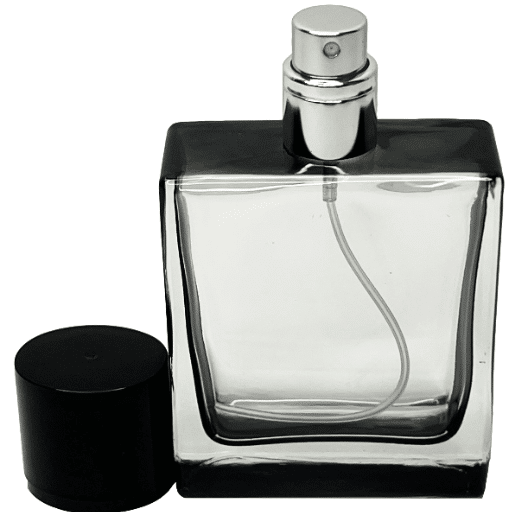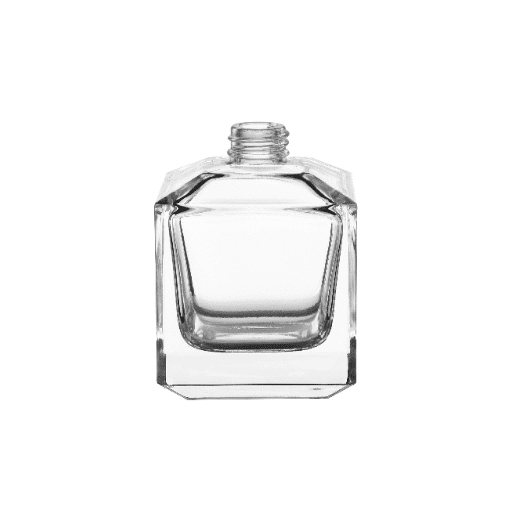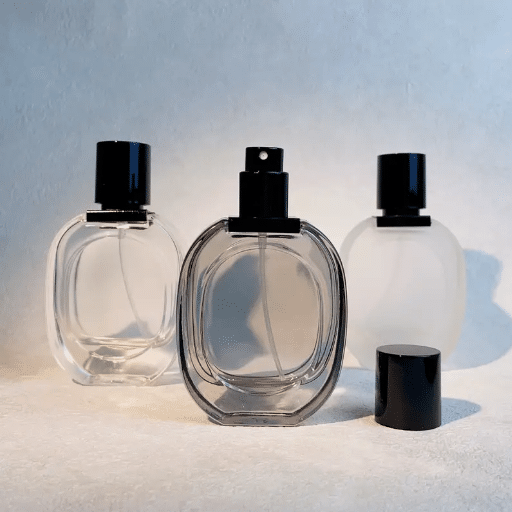The fragrance industry is undergoing significant changes these days, with sustainability taking center stage as consumers and brands alike strive to reduce their environmental impact. A considerable amount of work is being invested in making perfume bottles eco-friendly, reaching record highs, and for good reason: they should not simply be containers for scent. These bottles are being showcased as a symbol of conscious innovation, built from sustainable materials and with green manufacturing practices. This piece highlights the current developments in sustainable packaging for perfumes, shedding light on the eco-conscious decisions that brands implement, which align with the growing interest in ethical beauty. Stay tuned to learn how these changes are pushing the fragrance world forward and what that means for the eco-aware consumer.
Introduction to Eco-Friendly Perfume Packaging
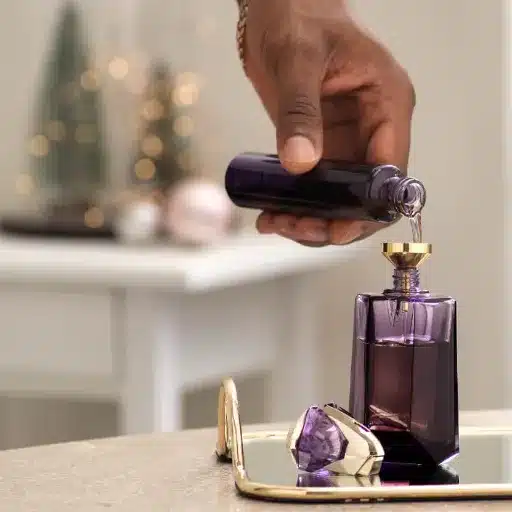
Eco-friendly packaging for perfumes aims to reduce environmental impact by utilizing sustainable materials and innovative designs. These methods include biodegradable packaging, reusable packaging, and recycled materials that generate minimal waste. Some brands also take steps to reduce carbon emissions from production processes. Choosing eco-conscious options is one way businesses are meeting the ever-rising demand for sustainability while improving the state of the planet.
The Importance of Sustainable Packaging in the Fragrance Industry
As consumers become increasingly environmentally conscious, the demand for sustainable packaging in the fragrance industry is growing. Recent search trends and data indicate a sharp rise in interest in eco-friendly products, with terms such as “sustainable packaging” and “green beauty” experiencing consistent growth in search records. This shift thus signals a change in consumer expectation and that the brands ought to adopt environment-friendly practices.
Consumers desire fragrances that speak of luxury and quality but also share in their value systems concerning sustainability. Thus, by utilizing renewable resources and minimizing plastic waste, along with offering refillable or biodegradable container options, fragrance companies can directly engage with this particular consumer base. Beyond that, these measures contribute to achieving global land goals of reducing waste and conserving resources. As such, these measures also enhance a brand’s value, aiding in the preservation of the environment.
Overview of Eco-Friendly Materials Used in Perfume Bottles
Environmentally-friendly perfume bottle materials are sustainability- and impact-prevention-oriented. Some of the materials consist of recycled glass, which has lower emissions during manufacture due to the recycling of pre-existing material. Additionally, the materials may include plant-based plastics derived from renewable resources, such as sugarcane or corn. Biodegradable and refillable bottles are a growing trend; consumers can indeed reuse these bottles instead of discarding them. Accordingly, aluminum and stainless steel are considered compatible with hard and recyclable materials, ensuring a longer life for the packaging. Such developments demonstrate the company’s efforts to achieve luxury with a smaller ecological footprint.
Trends Driving the Demand for Eco-Conscious Fragrance
1
Consumer Awareness
Now that people around the world are becoming more aware of environmental challenges, they multiply their search in every way imaginable for sustainable and eco-friendly products. In the fragrance world, it is truly a matter of people consciously choosing a product that aligns with their values of sustainability and responsibility.
2
Interest in Natural Ingredients
Growing interest in natural and ethically sourced ingredients is also placing pressure on brands. Consumers prefer scents that are free of synthetic chemicals to minimize their environmental and personal health consequences.
3
Transparency
Whereas a few decades ago, consumers did not demand transparency, today they expect it for sourcing, manufacturing, and environmental impact. Clear labeling and certifications are becoming exceedingly important in establishing trust.
4
Sustainable Packaging
Innovations in packaging, such as biodegradable materials and recyclable options, are some measures spearheading the movement toward eco-conscious fragrances. Reduced waste production and smaller footprints have become primary considerations when making a purchase. It is the waste, together with pollution and carbon footprints, that packaging innovations have addressed to create fragrances more conscientiously.
5
Cultural Shifts
Sustainability is a common interest and concern for Millennials and Generation Z. Their buying power stands as a significant force guiding the industry toward adopting greener standards.
This bunch of trends defines the strong and growing sustainability demand from the fragrance market, and thus shaping the future of the industry.
Materials for Eco-Friendly Perfume Bottles
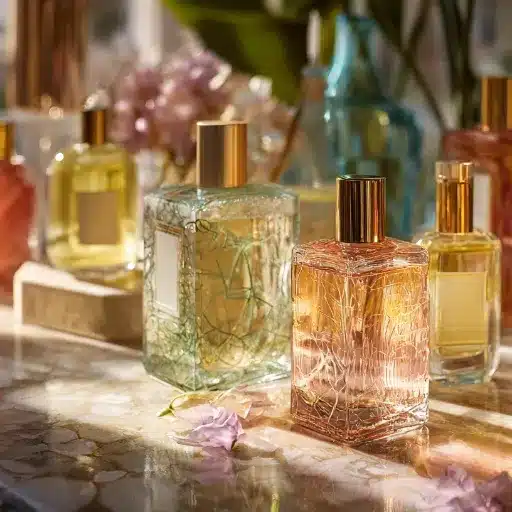
Eco perfume bottles may be made from materials that are sustainable, recyclable, or biodegradable. Some common choices include recycled glass, which reduces waste and energy usage, and aluminum, recognized for being one of the most efficiently recyclable and lightweight materials. By contrast, plastic derived from plants-say, sugarcane-is a biodegradable alternative. Wood or bamboo, sourced sustainably, can be utilized for decoration or as a top. The use of such materials helps minimize environmental impacts while ensuring that the packaging of a perfume looks aesthetically pleasing.
Glass as a Sustainable Choice for Perfume Packaging
In the context of perfume containers, glass is among the most sustainable materials due to its infinite recyclability and durability. Glass is commonly composed of natural products, including sand, soda ash, and limestone. Thus it does not produce any harmful chemicals in either production or disposal, having the least environmental impact. Glass is non-porous and aesthetically versatile, allowing brands to implement luxurious designs while ensuring the integrity of the fragrance. Further minimizing the ecological impact, products made with recycled glass require less energy to manufacture and promote circular economy principles. The glass sector is thus poised to benefit from growing consumer demand for eco-friendly alternatives that offer sustainable yet elegant perfume packaging.
Biodegradable Alternatives: Innovations in Bottle Materials
In the realm of perfume bottle material development, biodegradability is emerging as an alternative, offering a sustainable option that can break down biologically over time. Other examples are bamboo, cork, and bioplastics from renewable materials such as cornstarch or sugarcane. Through these innovations, adverse effects on the ecosystem can be minimized, meeting another consumer demand for environmentally friendly solutions. To ensure that the performance and durability of the bottles are not compromised while focusing on aesthetics, some companies are developing plant-based coatings and resins. With these breakthroughs, the fragrance industry is making significant progress toward sustainability.
The Role of Recyclable Materials in Packaging Solutions
As perfume packaging trends toward sustainability, recyclable materials are thus gaining ever-increasing significance. These materials, including recycled glass, aluminum, and cardboard, decrease solid landfill waste and conserve natural resources as much as possible. Mainly glass really is one of the main materials in the fragrance world, for it can be endlessly recycled without losing quality and thus being less attractive for bulky interventions. In addition, more and more brands start buying more PCR (post-consumer recycled) plastic, which is environmentally preferred to virgin plastic. The further these materials are incorporated, the more companies can reduce their carbon footprints and target consumers who prioritize sustainability as a key value in their purchasing decisions. The importance and urgency of moving from linear to circular economies are further emphasized by the global trends such that the implementation of recycling materials in packaging processes is hereby paved as the first step into an eco-future for that industry.
Manufacturing Processes for Sustainable Perfume Bottles
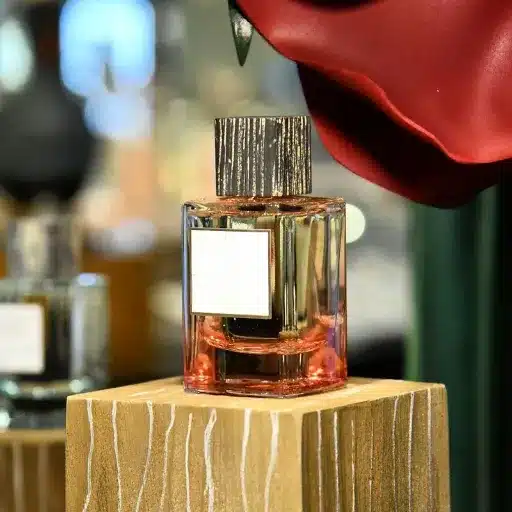
In the process of making sustainable perfume bottles, the key steps around eco-friendly practices are as follows: First, to minimize raw material extraction, recycled or biodegradable materials are sourced, such as glass, plant-based plastics, or aluminum. Production methods that require less energy are employed, including the use of renewable energy, minimizing water consumption, and reducing the carbon footprint. Another step involves applying the latest molding and design technologies to manufacture bottles that are lightweight, thereby reducing the amount of material used without compromising durability and elegance. The finishing of these bottles is done with innovative techniques, including water-based coatings and natural dyes, so that they remain environmentally friendly through the entire manufacturing process.
Eco-Friendly Manufacturing Techniques in the Fragrance Industry
Environmentally friendly production of fragrances minimizes adverse effects on the planet and meets the growing global demand for a sustainable economy. One major concern is the sourcing of the raw materials. Many companies now rank the use of sustainably harvested organic ingredients with high priority to ensure that the arts of ingredient collection are ethical and that biodiversity is maintained. On the packaging front, innovation has led to the introduction of refillable perfume bottles, along with biodegradable and recyclable options, all of which help reduce waste volumes.
Other energy-efficient production systems are also being heavily promoted by brands, including the utilization of renewable energy sources for their processes, thereby reducing greenhouse gas emissions. Water conservation during production is a next-generation approach that utilizes closed-loop systems to recycle water, thereby reducing its consumption. In summary, these steps demonstrate the fragrance industry’s progression toward a greener and more responsible path, showing that luxury and sustainability can coexist.
Energy Efficiency and Waste Reduction in Production
Sustainable perfume bottle manufacturing involves incorporating energy-efficient practices and minimizing waste throughout the manufacturing process. Slowly but surely manufacturers have started adopting the use of renewable sources of energy, be it solar or wind; this lessens the carbon footprint generated from production activities. With new advancements in technology, machinery is becoming more efficient in utilizing energy by utilizing resources more effectively, thereby consuming less energy.
Whatever is done to reduce waste goes a long way towards making a perfume bottle eco-friendly. Many of these producers strive to make better use of recycled materials, including post-consumer glass and plastics, to reduce their dependency on virgin raw materials. The use of closed-loop systems enables the reuse of production scraps, thereby reducing material wastage. Moreover, these bottles are made of lightweight materials so that fewer materials are used and less carbon is emitted while transporting them due to the lower weight of shipment.
When such energy conservation and waste reduction methods are applied in unison, the perfume industry testifies toward its commitment to giving luxury a sustainable paradigm. These innovations set a precedent for the industry and nurture environmental wellness.
Environmental Impact of Perfume Packaging
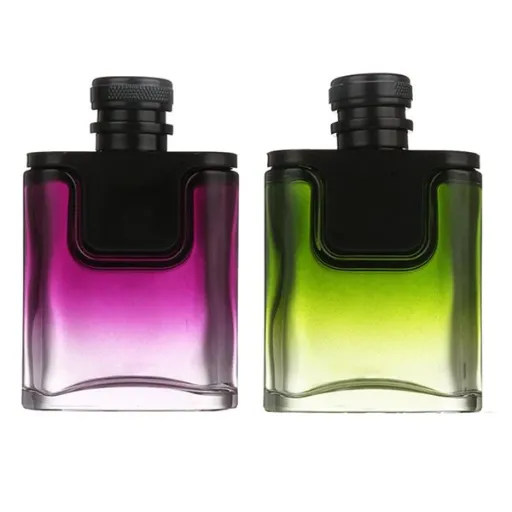
The environment suffers significantly from the trade of packaging due to the usage of non-recyclable packages, the production of packaging waste, and high-energy-consuming production methods. Most conventional perfume bottles are made from a mixture of glass and plastic, which requires vast amounts of resource-intensive energy for their production and contributes to landfills. Thus, elaborate and luxurious packaging contributes to material wastage, while sustainable materials, minimalist designs, and improved recycling opportunities can significantly mitigate the ecological footprint of perfume packaging.
The Carbon Footprint of Traditional vs. Eco-Friendly Bottles
Traditional perfume bottles have a significantly higher carbon footprint due to resource-intensive production, limited recycling, and wasteful designs compared to eco-friendly alternatives that focus on sustainable materials, light packaging, and recyclability.
| Parameter | Traditional | Eco-Friendly |
|---|---|---|
| Materials | Glass, Plastic | Recycled, Organic |
| Production | Resource Heavy | Energy-Efficient |
| Design | Intricate | Minimalistic |
| Recyclability | Limited | Highly Recyclable |
| Waste | High | Low |
| Durability | Standard | Sustainable |
| Carbon Impact | High | Lower |
Lifecycle Assessment of Sustainable Packaging Solutions
Sustainable packaging for perfumes considers maintaining a low environmental footprint throughout its entire lifespan, which begins with using recycled or renewable materials, such as organic glass or biodegradable plastics. Production utilizes energy-efficient processes, aiming to reduce resource consumption and emissions further. Due to its minimalist nature, the packaging requires fewer resources while being highly durable, allowing the product to be used for a much more extended period. At its end of life, the products or packaging materials are compostable or highly recyclable, thus leaving behind very little in the form of waste. All these activities significantly reduce the carbon footprint compared to conventional packaging. Apart from meeting consumer demand for environmentally conscious products, sustainable packaging also helps promote a circular economy, one of the key factors in sustaining environmental conservation.
Consumer Awareness and Perception of Eco-Friendly Packaging
The general consciousness about the eco-packaging is steadily blossoming, propagating use amid nature concerns in the broader sense due to climate change and the growing waste management issue. Studies have demonstrated that most consumers actively seek products in sustainable or recyclable packaging, associating them with ethical and environmentally responsible brands. The parent company in eco-packaging stands with at least an edge because increasingly many buyers nowadays are ready to adbain for sustainable options. On the other hand, issues of doubt emerge regarding “greenwashing,” by way of some brands misleadingly claiming supposed environmental benefits. To gain consumer trust and feel that eco-packaging is a positive move, transparency and certification are very essential.
Refillable and Reusable Packaging Solutions

Refillable and reusable perfume packaging solutions are considered an innovative way to minimize waste and promote sustainability. Allowing consumers to refill their bottles rather than simply throwing them away reduces single-use packaging and increases usage over time. Giving the brand a boost, these solutions could feature stylish and durable designs that incorporate a simple fill-up system for maximum convenience, thereby ensuring practicality and chicness with environmental values.
Benefits of Refillable Perfume Bottles
- ✓
Environmental Impact: Minimizes plastic and glass waste disposal by reducing the use of disposable bottles. - ✓
Cost-Effectiveness Incentive: It is a much better investment over time, with users charged only for the fragrance refills. - ✓
Sustainability Appeal: Attracts environmentally conscious customers and supports sustainable practices. - ✓
Customization Options: Allow for personalized designs and signature bottle styles, tailored to fit the individual’s taste. - ✓
Brand Loyalty Boost: Promotes repeat sales by developing trust and commitment to green values.
Consumer Demand for Reusable Packaging in the Fragrance Market
Consumers in the fragrance market are actively looking for refillable packaging, mainly as sustainability becomes a more prominent feature in purchase decisions along with eco-friendliness. According to the recent information, searches for more safe-to-environment and refillable perfume products have shot up steadily for the past few years. This is a growing trend in buyer behavior, a shift that finds Americans increasingly aware of environmental causes and, thus, intent on curbing single-use wastes. Fragrance brands that invest in reusable packaging not only meet this rising demand but also lay down their claim to being leaders in sustainability, getting thus closer to such a mass of eco-conscious people.
Reference Sources
-
How Sustainable Packaging is Transforming the Fragrance Industry – Discusses innovative biodegradable and compostable materials used in perfume packaging.
-
Biodegradable Packaging For Perfume – Explores materials like recycled paper, molded fiber, and biodegradable components for sustainable perfume packaging.
-
Meet Our Sustainable Packaging – Highlights Floral Street’s use of recyclable paper pulp cartons for perfume packaging.
-
Sustainable and Eco-Friendly Perfumes – Focuses on eco-friendly glass bottles, refillable designs, and plastic-free packaging.
-
Sustainable Perfume Packaging Solutions for the Eco-Conscious Fragrance Brand – Provides an in-depth look at sustainable packaging options for eco-conscious fragrance brands.
Frequently Asked Questions (FAQs)
What are some materials used for eco-friendly perfume bottles?
Eco-friendly perfume bottles are typically made from sustainable materials, such as high-grade glass, which would allow you to reuse and recycle. Sometimes, these bottles come with innovative closures with spray pumps to reduce waste. Many brands opt for eco-friendly packaging to minimize their carbon footprint while maintaining the quality of their products.
How might glass perfume bottles be claimed as sustainable?
Perfume bottles made of glass are sustainable by being reusable and recyclable. Unlike plastic options that can be recycled only once or twice, glass can be recycled repeatedly without degradation in quality and is, therefore, favored by eco-friendly fragrance houses. Usually, glass manufacture entails lesser pollution than making plastic.
What are the advantages of biodegradable perfume packaging?
Biodegradable perfume packaging reduces landfill deposition, thereby lessening the environmental impact. This type of packaging is designed to decompose naturally, reducing pollution and promoting environmental awareness. They promote their brand image by choosing to be biodegradable, appealing to green-conscious customers.
How do sustainable fragrance brands maintain product quality?
Sustainable fragrance brands maintain product quality by sourcing fine ingredients and utilizing eco-friendly packaging materials. As part of their efforts, they may also research packaging solutions that protect the fragrance whilst being environmentally friendly. This emphasis on quality in turn builds consumer trust in end products that are deemed to be environmentally friendly.
What is the significance of closures in eco-friendly perfume bottles?
Closures, such as spray pumps, play a crucial role in eco-friendly perfume bottles, as they offer good functionality with minimal waste. Sustainable brands usually intend to use closures which are recyclable, so that every element of the product packaging fits in with their environment responsibility goals. This consciousness furthers the sustainability of the product as a whole.
How does fragrance packaging help consumers minimize their carbon footprints?
Consumers may lessen their carbon footprint if they purchase eco-friendly perfume bottles capable of being recycled or reused. By favoring brands that prioritize sustainability in their fragrance packaging, consumers can contribute to a broader movement for environmental responsibility. Minimal packaging and biodegradability in turn also serve the same purpose.

